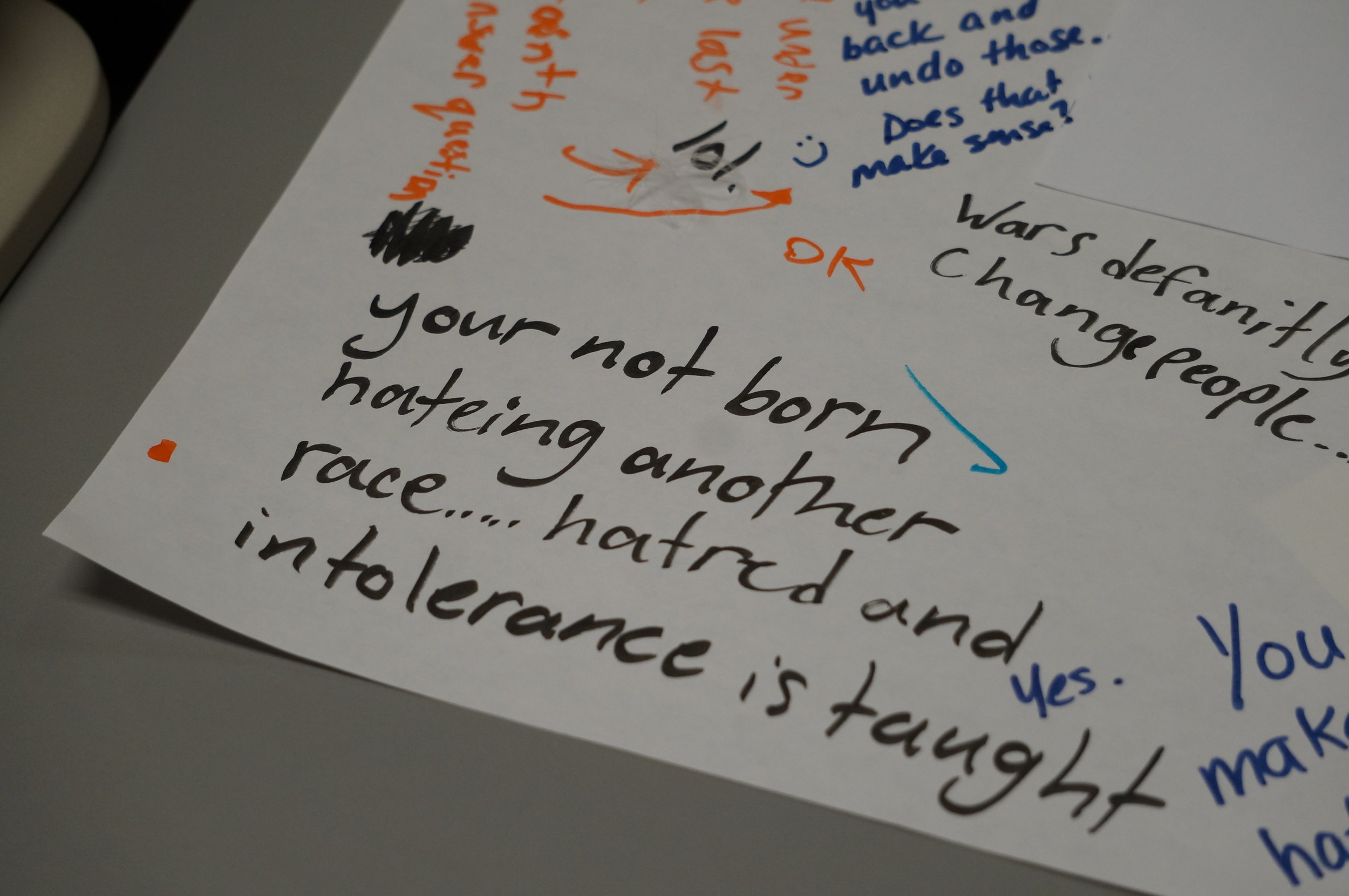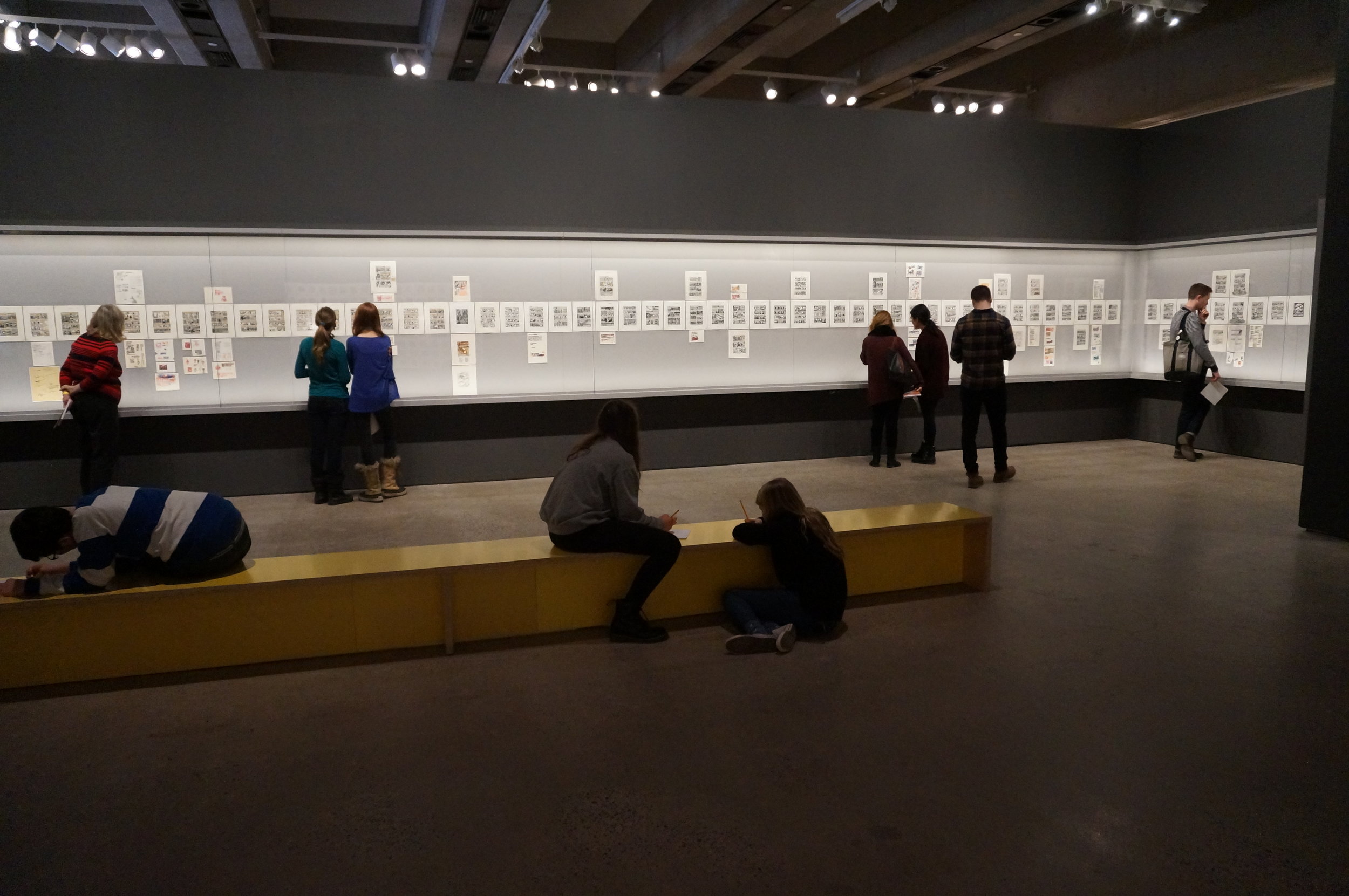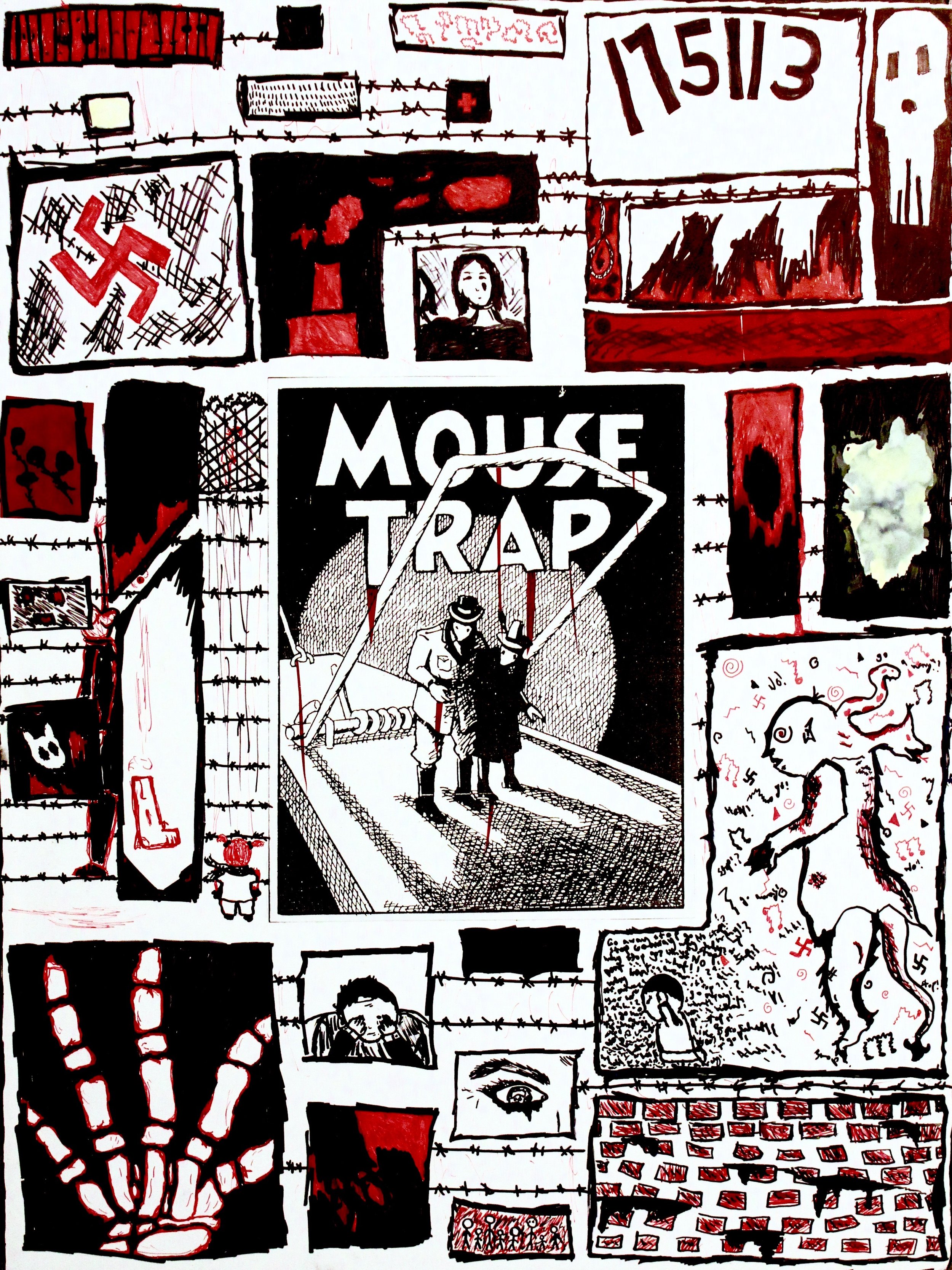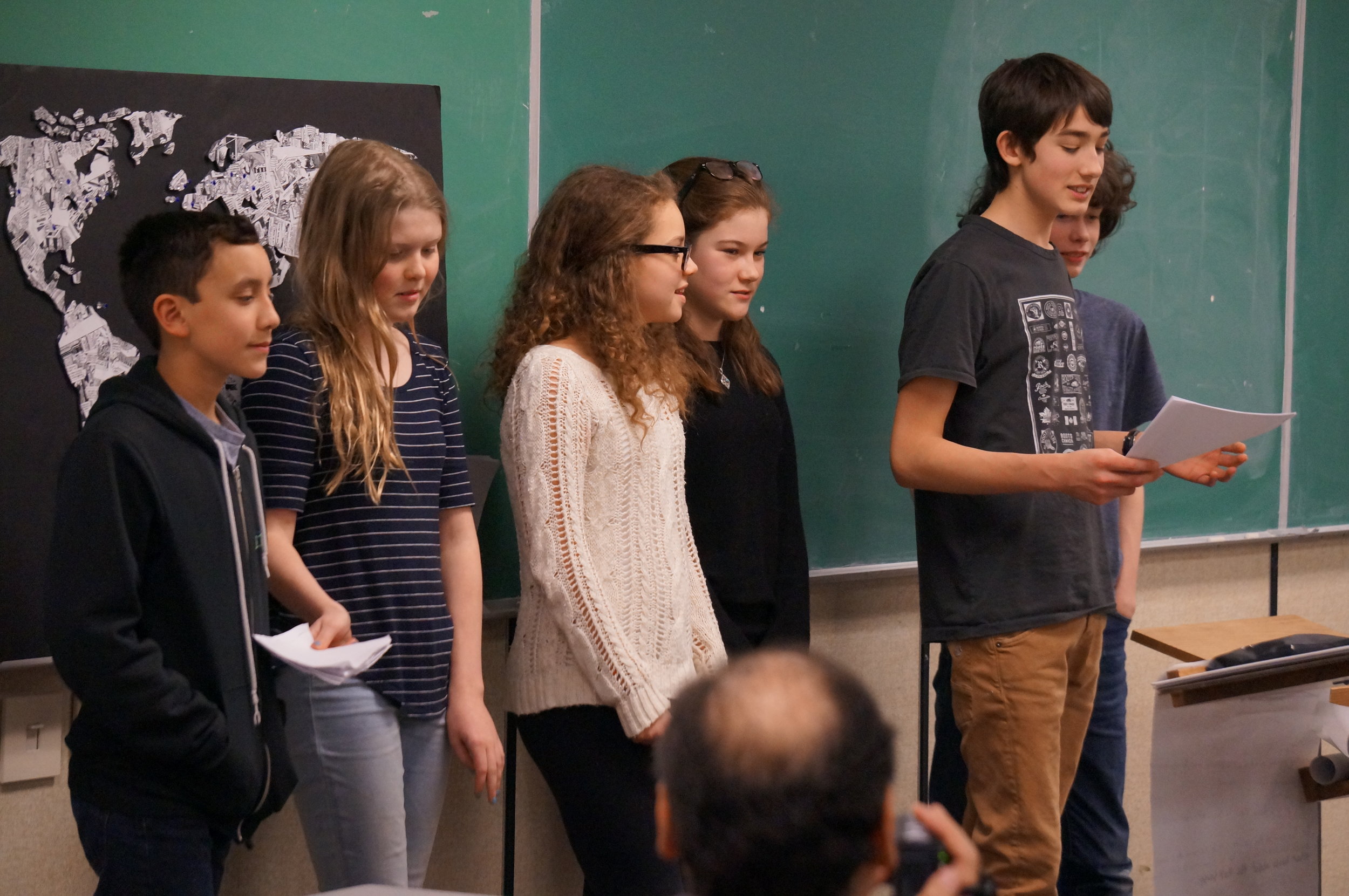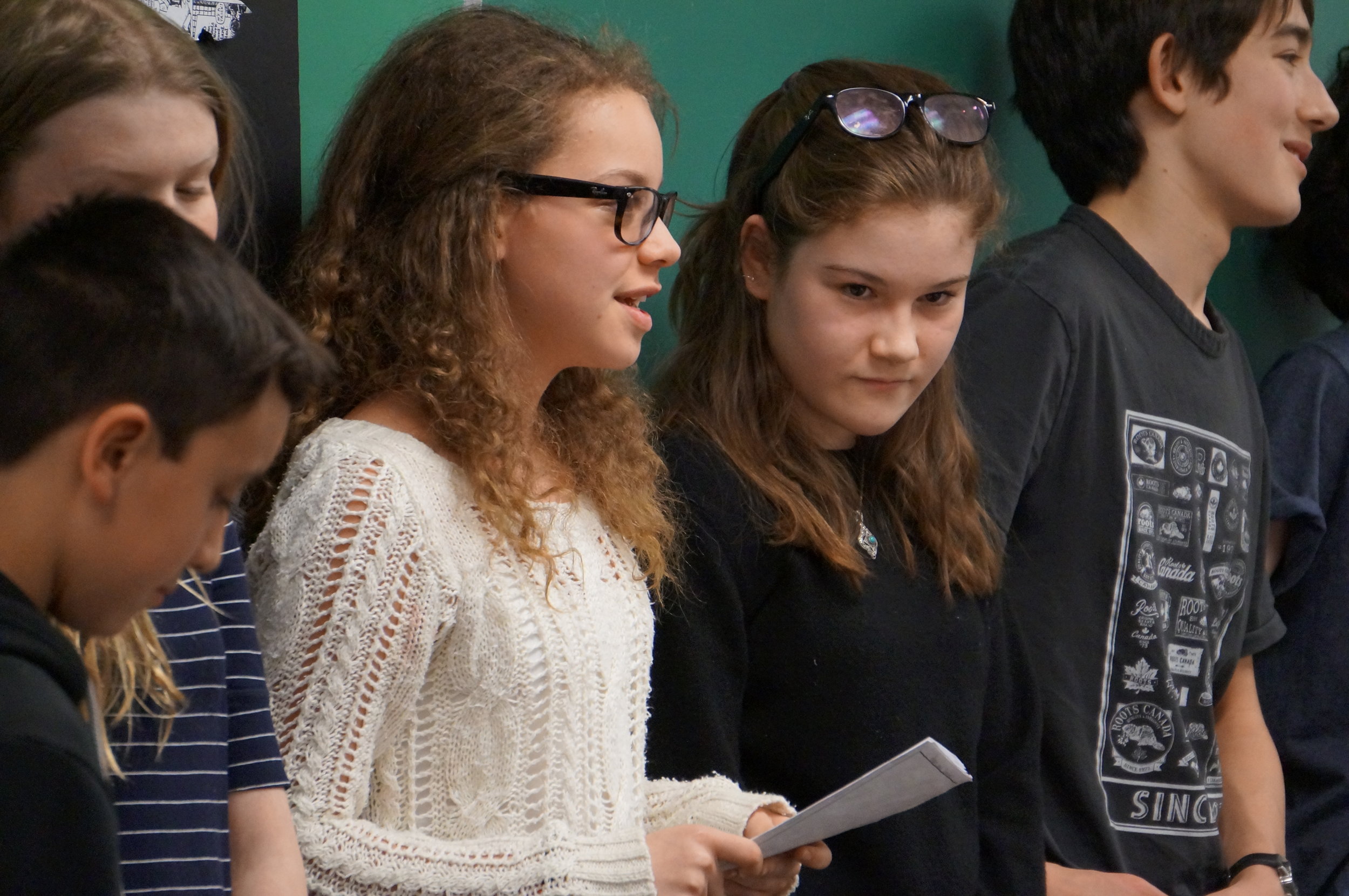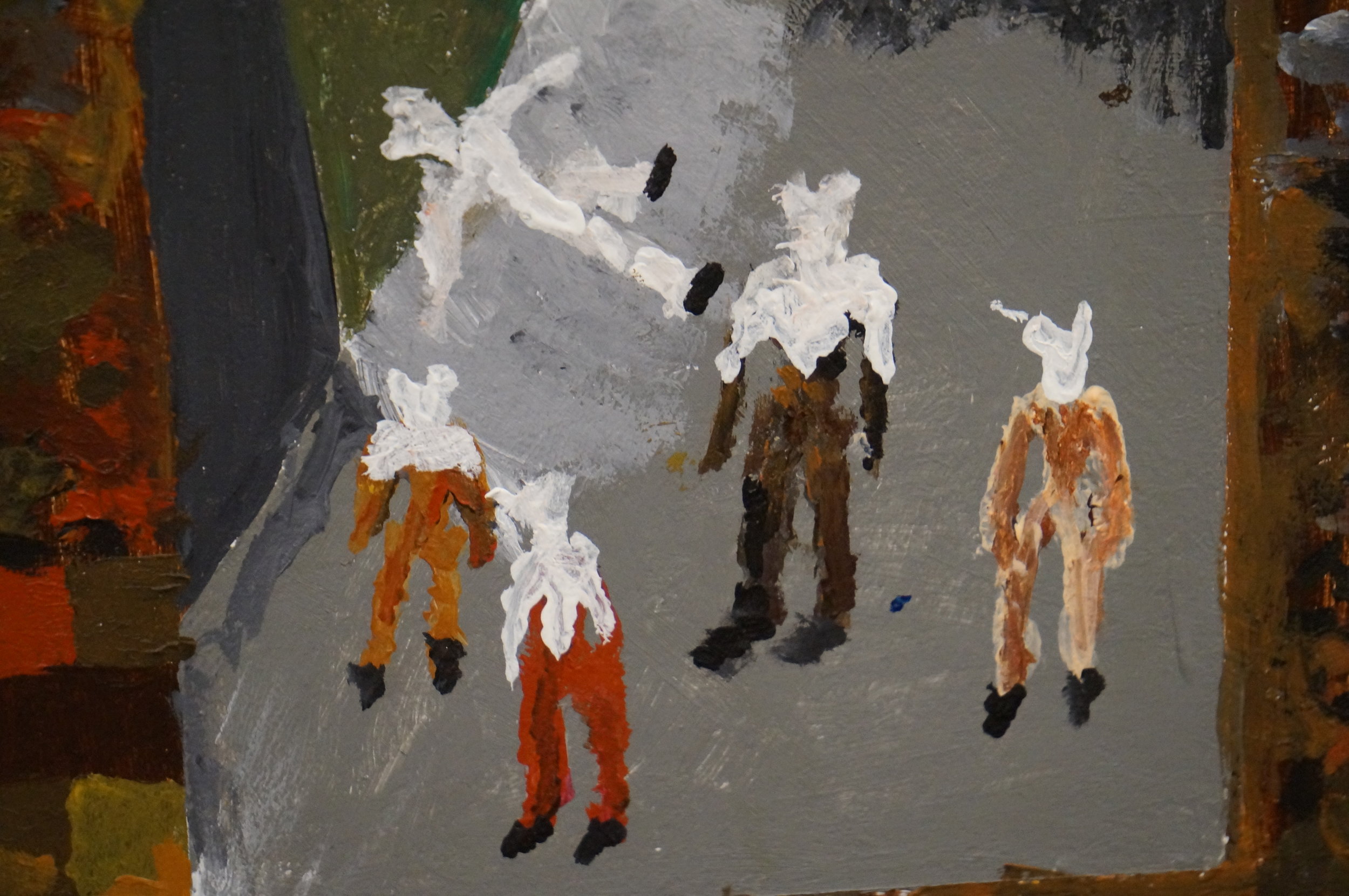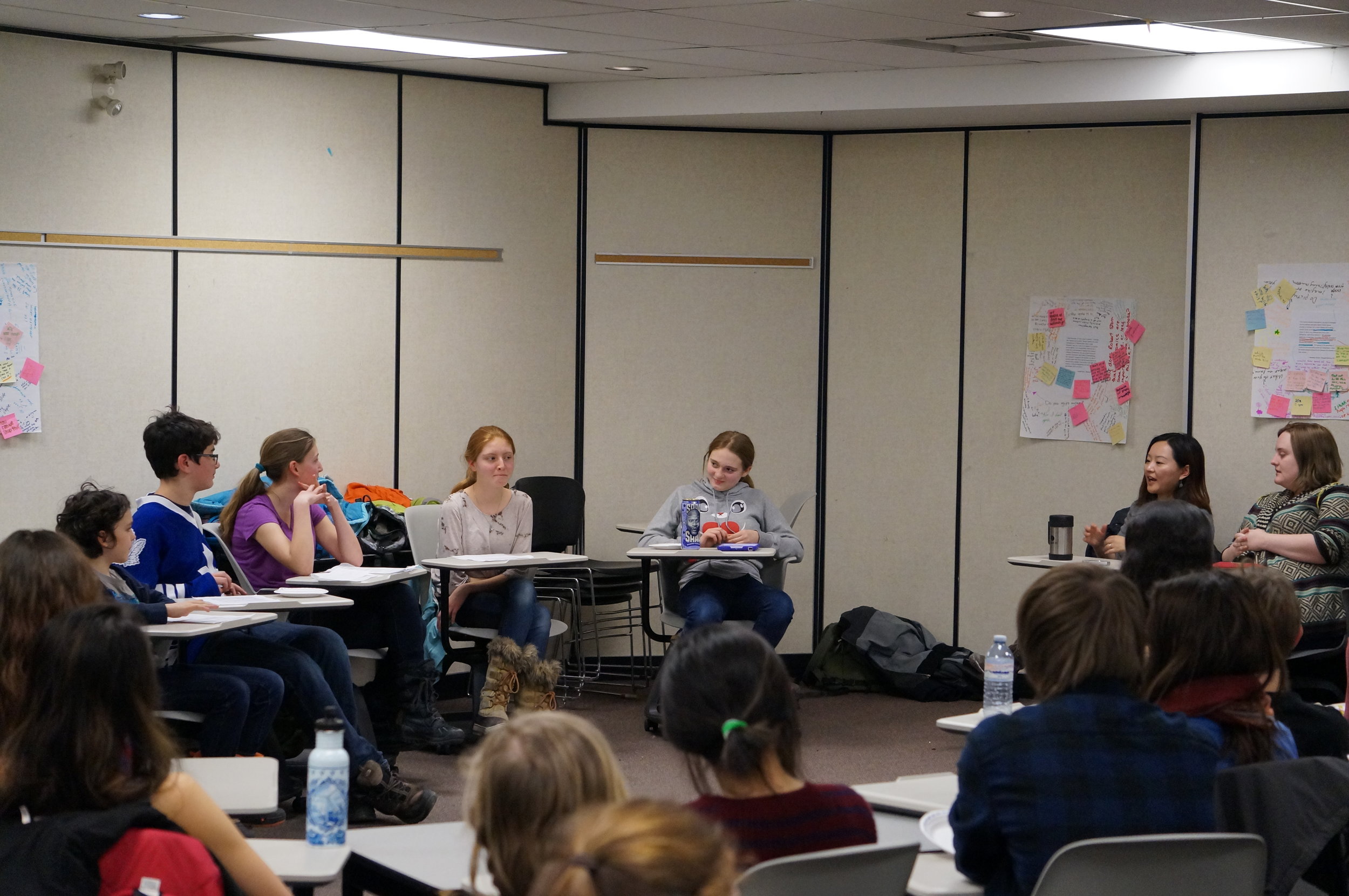What Participants Said
“Hopefully other kids can learn from our work since the Holocaust is sometimes a touchy subject that teachers and parents avoid. I just hope that our work can maybe help break through that barrier. I don't really care if people like the work I did. I just want them to understand what the point of it was all about.” - Student, Delta Alternative Senior School
”I really enjoyed the whole experience. I had never read [the book] before and I thought it was a great book and really emotional and thought-provoking. It was cool for teachers and students to all be working together, taught by other teachers. Lastly, I really liked hearing everyone's take on the book and the projects and bouncing ideas off of each other. I thought that just made the experience so much more educational. I learned a lot.” - Student, Delta Alternative Senior School
“I read Maus before in Grade 10. And then, reading it again, I was able to look into it in a different way. I appreciated the risks that we took, particularly in the choices that [students] made, and the projects [they’ve] done. It was very good to see what learners are capable of doing when given the chance.” - Teacher Candidate, OISE — University of Toronto
“I had first read Maus a couple of years ago, and I had also learned very basic info on World War 2, but for some reason I hadn't connected them. And, I really connected the story—the Holocaust and World War 2—especially with our project, back to today, and to me and finding out where my family was during the war, and that there [are] still these people out there. It was scary. And it was just, it's not being distant.” - Teacher Candidate, OISE — University of Toronto
”I really appreciated seeing how different all the projects were. And, how many different ways, how many different methods everyone used to engage with the text, and how different the products were, and how they were all amazing in their own way.” - Teacher Candidate, OISE — University of Toronto



